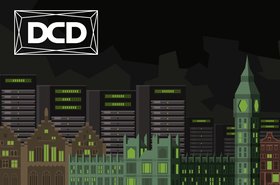Even as the global pandemic continues to wane, IT professionals must accept that businesses from all sectors have crossed the Rubicon in the race to digital. Market volatility and fast-changing customer behaviors have completely altered how businesses operate. According to a recent McKinsey survey, organizations have accelerated the digitization of customer interactions, supply chain processes, and internal operations at a rate of three to four years. What’s even more jarring is the same survey found that these businesses have packed seven years of digital innovation into a single year, broadening and transforming their product portfolios.
But this advanced digitization of business products and processes isn’t the only thing keeping IT teams up at night. After nearly a year-and-a-half of this worldwide work-from-home experiment, some business owners see the writing on the wall and expect hybrid models to be the way of the future. Companies like Pinterest and REI have already released hundreds of thousands of square feet of commercial office space as they transition to hybrid models, limiting the number of employees coming into physical offices on a given day. In Deloitte’s “2021 Return to Workplaces” survey, 68 percent of employers who responded say they plan to implement some sort of hybrid model.
This dramatic shift to remote work is putting further stress on the edge of the network, and IT professionals are working harder than ever to manage their edge resources.
Mounting stress for IT management processes
Before examining how proper IT management systems solve these issues, it’s important to understand the current challenges being faced by the industry. Following are just a few examples.
- IT infrastructure sprawl:
Modern IT infrastructure often includes on-premises and colocated sites, public and private clouds, and a growing edge presence. During the pandemic, 46 percent of all organizations increased hybrid cloud investments to enable remote workforces, scale digital services, and push computing resources closer to users. - Higher demand at the edge.
The demand for data center equipment and edge sites is growing fast with edge spending slated to reach $250.6 billion in 2024. - More complex IT management:
IT teams need secure, remote access to a wide array of equipment. These devices increasingly are packaged with vendor tools, increasing management complexity. - IT site access is not guaranteed:
During the pandemic, most IT work was done remotely. IT teams may or may not have remote access to all computing resources. - Manual processes don’t scale.
IT teams are managing more devices and sites than ever. Using manual processes is likely to create challenges keeping up with demand.
Goals achieved with a modern management platform
As an organization’s IT infrastructure transforms in real-time, it will need a robust, scalable management platform to support that shift in order to accomplish any of the following goals.
- Managing IT device complexity:
The influx of 5G, Internet of things (IoT), and artificial intelligence/machine learning is driving explosive growth of compute, network, and storage at the edge. By connecting to IT devices at the edge, organizations gain visibility into health and status and can remotely manage and control their devices from anywhere, anytime. - Increasing automation to scale services:
By automating device management processes and shortening their deployment times, an organization can increase business agility. - Providing a better user experience:
It’s now easier to improve the end-user experience with faster video performance, ending substandard video, glitches, and failure of online meeting and collaboration tools. - Ensuring infrastructure resilience:
Leverage always-on, always-connected tools for out-of-band device management and enable rapid recovery from any outages, especially at remote sites. A more modern IT management platform allows you to utilize cellular access to connect to sites where ethernet is down or doesn’t exist. - Enhancing the security of IT infrastructure:
A management platform needs to prevent unauthorized access to devices and tightly control the operations authorized users can perform on them. Additionally, it must provide the ability to manage the firmware on the IT devices so the latest versions are being used to ensure security. - Building for the future:
As IT builds for tomorrow’s needs, it is crucial to have a management platform built on open standards and APIs. The platform must also be extensible and easy to integrate into IT systems and have an adaptable and scalable architecture to handle the dynamic markets.
Today’s solutions for tomorrow’s infrastructure
Fortunately, new IT management platforms in the market provide the data visibility, device access, and automated processes needed to increase speed, accuracy and scale. With the proper management tools, IT teams can handle more users, devices, and locations than before without sacrificing quality or responsiveness.
Some products are specifically designed to meet the unique challenges of remote work and edge proliferation by incorporating various hardware and software tools to increase edge visibility and remote management capabilities. These types of IT management ecosystems allow organizations to support user and device growth flexibly and rapidly, including use cases where workers need 4K streaming access.
Business demands are growing fast, necessitating a different approach to IT management. However, by considering these new solutions, organizations can provide their IT teams the tools they need to support their data centers and edge growth as we navigate this new digital terrain.
By harnessing the visibility and automated processes of this centralized, open standards-based platform, your team can streamline IT management, strengthen security, support users, and provide the uptime and responsiveness your organization requires.
Download our white paper, From Enterprise to Edge: Speeding Deployment and Management of Complex IT Infrastructures.





